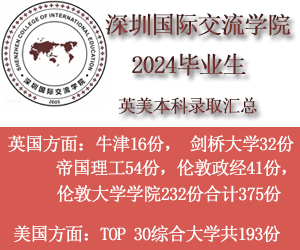当前位置:首页 » 深国交哲学社 » 正文
-

斜下的夕阳点燃着怒火,仓促的应变时间和瘫痪的公共交通未能阻扼无尽潮涌的人海。6 月 24 日下午 5 点半,笔者所在的波士顿市古老的市中心已充斥人群和条幅,以抗议当天上午美国最高法院推翻罗诉韦德案的决议。支持堕胎权利的活动者娴熟地封锁街道,引导人群,高喊「我的身体我做主 (My body my choice) 」、「无问教会,无问国家,女性自决 (Not the church, not the state, women will decide their fate) 」口号,间或有战鼓击节,风琴合鸣。而不同组织展板的迥异色彩,抗议者条幅措辞选取的微妙差异,以及人群中不时发出的异议和纠正,也揭示着这场运动的多元性。八点,人群才在笼罩的夜幕下开始散去,而这将是一场未来可预见的巨大运动动员的序曲。
困惑,而非愤怒,是笔者作为堕胎权利毫无歉疚的支持者的第一反应。为何已有近五十年之久的对堕胎权的宪法保障仍会一夕倾覆?反堕胎运动的动机和动员能力究竟来自哪里?而女性主义在一场败局后又将如何再组织?这些问题无论是对堕胎权和其它女性权益的支持者,还是对社会问题的研究者来说都有其意味,而回顾相关问题的历史和研究文献则将不无裨益。 本文从《美国女性社会运动的行动主义牛津手册》 (The oxford Handbook of U.S.Women's Social Movement Activism) 译出,以飨读者。原文著于 2017 年,自无法涵盖近年来的法律变化和新的研究成果。且原文美国政治法律术语和组织名称纷繁,笔者限于学力,难免有较多错漏,还望读者指正。
[摘要]
本章探讨美国的女性主义者争取堕胎和生育权利的历史,并分析这些议题为何能持续动员相反运动的参与者。符号政治 (Symbolic politics) 是冲突长期存在的一个重要原因,而堕胎与生育权利则关乎对性别和性存在的关切;运动 / 反运动的动态变化也有助于保持冲突的活力:当一方赢得战果,另一方则获得动员的促力,彼此开始新一轮的争斗;女性主义的策略和框架也一直在适应政治和文化环境的变化,随着不同群体(如年轻女性、有色人种女性)参与组织,她们为争取堕胎和生育权利的斗争贡献了新的框架和策略。
关键词:堕胎、生育权利、女性主义、反运动、性别、性存在 长期以来,在美国和许多国家,堕胎与生育权利一直是女性主义的关键议题。许多在「第二波」女性运动中活跃的女性即围绕堕胎以及生育控制进行动员,而对这些权利的威胁则仍激励着许多年轻的女性主义继续参与当代的运动。本章将探讨两个主要问题:首先,堕胎和生育权利议题为何能持续动员参与者?其次,女性主义者如何有效地改变其战略——包括冲突目的、战术选择和议题框架,以回应对生育权利的新挑战?即使本章的重点是生育权利运动,我们也研究了反堕胎运动和更广泛的反女权运动,因为这些反女权运动影响了女权运动的动员能力和战略抉择。鉴于堕胎具有深刻的个人重要性和象征意义,我们也研究了堕胎议题对身处冲突两端女性的激励作用。对于如何解释某一议题的动员能力和战略抉择,我们将介绍部分关键的理论观点,其中包括符号政治。这一概念经常被用于研究堕胎议题、社会运动动员的原因、策略抉择、运动/反运动的动态变化,这些均对理解围绕堕胎的冲突至关重要。
我们首先介绍美国围绕堕胎和生育开展的女性运动的历史,并重点关注动员和战略随时间的演变;然后,我们研究为何堕胎对双方而言都仍是个重大的议题;最后,我们评估堕胎和生育作为一个动员议题的持续重要性,以及女性运动调整其战略的能力。

美国围绕堕胎与生育的女性运动

早期努力  19世纪出版物《Le Rire》的一幅插图,一个女人在丈夫准备上床时祈祷免于意外怀孕。(图源: Historia/REX/Shutterstock)
19世纪出版物《Le Rire》的一幅插图,一个女人在丈夫准备上床时祈祷免于意外怀孕。(图源: Historia/REX/Shutterstock)长期以来,女性对身体自我控制的权利一直是女性主义的基本原则,但运动的需求和策略、以及女性的社会经济地位则随着时间推移发生了剧烈的变化。最初在美国各州,遵照英国普通法, 女性能感觉到胎动的阶段前的堕胎都是许可的。19 世纪,试图实现职业化的医生与反淫秽运动 (anti-obscenity) 运动的活动家联合起来,将实施堕胎者逐出医疗领域。由于尚无堕胎权利运动,至 1900 年,堕胎在所有州均被定为非法 (Mohr 1978; Reagan 1997)。19 世纪的女性主义者确实开始主张「自愿母职」的权利,但她们并不赞成避孕和堕胎。在女性缺乏经济独立的时期,她们需要男性在婚姻中的承诺,因为已婚女性的财产和收入都要依靠丈夫。高等的教育机会和高薪工作对妇女来说并不开放,也无法获得。在获得选举权之前,女性没有政治代表,因此也没有能力修订使她们不得不依赖丈夫的法律。正如琳达·戈登 (Linda Gordan 2007) 所解释的那样,当时的女性主义者不赞成避孕,因为她们担心使用避孕药具会导致婚外性行为,而这将导致男性而非女性获得更大的自由。因此,她们主张女性有权拒绝与丈夫发生性关系,也反对婚内强奸合法化。只有在经历大规模的社会变革,如城市化和工业化导致女性参与劳动市场之后,女性运动才扩展了她们对生育权利的看法。 随着女性在 20 世纪越来越多地进入劳动力市场,她们开始组织起来,支持避孕和堕胎。玛格丽特•桑格 (Margaret Sanger) 创造了「节育 (birth control) 」一词,并在1916年开设了第一家节育诊所,倡导避孕,但反对堕胎。许多节育倡导者的动机是希望改善女性的经济状况,包括社会主义者,他们认为节育可以帮助工人阶级,使工人阶级能够限制自己的家庭规模。部分人还支持争取女性的性平等,而另一部分人则担心性放纵以及与母职相关的女性地位的下降 (Gordon 2007)。艾玛·古德曼 (Emma Goldman) 和玛格丽特•桑格等女性主义者则认为,节育将使女性从强迫母职中解放出来,并使她们能享受性生活 (Reagan 1997: 36)。到了1960年代。女性主义者在支持节育、堕胎和女性的性自由方面已团结一致。她们倡导女性能获得避孕和堕胎,并将它们视为更广泛的女性健康运动的一部分,建立其新的女性健康诊所,旨在使女性能够对她们的身体和生育做出决定 (Morgen 2002;Ruzek 1978)。 
围绕堕胎之战 伴随着女性主义者和计划生育倡导者的支持,1960 年代出现了一场堕胎合法化的运动,该运动的各种策略受到 1960 年代其它运动和部分选民的立法游说和诉讼经验的影响 (Staggenborg 1991)。堕胎运动 (abortion movement)——其中「运动」一词是堕胎合法化前产生的叫法,得到了一些全国性组织的支持:全国女性组织(National Organization for Women, 简称 NOW)在1967年支持废除反堕胎法,全国废除反堕胎法协会(National Association for the Repeal of Abortion Laws,简称NARAL)则在1969年成立。然而这些组织当时并不强大,该运动依靠的更多是基层的草根活动家。女性解放主义者则通过演讲和其他公共集会,促力改变社会对堕胎的认识。鉴于人们需要安全、可负担和富有同情的可选项,尽管有面临刑事指控的风险,女性解放主义者仍在采取许多直接行动策略 (direct-action tactics),如提供堕胎转介,有时还直接提供堕胎服务 (Kaplan 1995)。堕胎运动的参与者还包括「亲选择」的宗教活动家,如神职人员咨询服务 (Clergy Consultation Service)。这是一个在1967-1973年期间在许多州运作的堕胎转介服务,由天主教修女和神父、基督教牧师和犹太教拉比组成(Carmen和Moody 1973)。许多见识了非法堕胎恶果的医生,也参与了帮助女性堕胎,并在立法后仍不顾风险提供堕胎服务 (Joffe 1995)。活动者还通过现成的渠道,包括州立法机构和法院,向州立法机构提出废除反堕胎法案的提请。1970 年,由于活动者的游说努力,纽约州和其它三个州改革了各自的堕胎法,但立法进展仍很缓慢。堕胎运动在进行立法游说的同时还追寻法律战略。1973 年,在运动的积极分子提起了许多案件,并在罗诉韦德案 (Roe v. Wade) 中提交了许多支持堕胎合法的「法庭之友」 (Amicuscuriae) 文书后,最高法院最终将堕胎合法化 (Faux 1988)。 
1973年4月,反对者和支持者在新泽西州特伦顿的州政府大楼外,在最高法院对罗伊诉韦德案作出裁决几个月后。 反堕胎运动是针对 1960 年代的堕胎权运动而出现的,堕胎合法化使许多反堕胎者感到愤怒,反堕胎运动又随之开始活跃起来。即使支持堕胎的运动已经取得了巨大的胜利,在罗诉韦德案后,它还变得更为组织化,因为反堕胎者迫使堕胎运动在新的赛场上捍卫新赢得的堕胎权 (Staggenborg 1991)。在堕胎合法化后,反堕胎运动将堕胎冲突的焦点从各州转移到国会,立即开始推动宪法修正案以禁止堕胎,如果无法做到,则通过联邦立法来禁止堕胎和禁止联邦为贫困女性堕胎提供医疗资助。为了应对这些威胁,堕胎权利团体发展了更正式的组织结构使他们能参与国会的游说策略 (Staggenborg,1988)。NARAL 改名成全国堕胎权利行动联盟 (National Abortion Rights Action League),并开始在华盛顿雇用专员;堕胎权利宗教联盟(Religious Coalition for Abortion Rights,简称 RCAR),则在全国范围内通过州级的分支机构组织了「亲选择」(pro-choice) 的宗教团体。堕胎权利的联盟也得到了全国性的加强,因为计划生育协会 (Planned Parenthood) 和美国公民自由联盟 (ACLU) 等组织都对该运动给予了支持。 1976 年,反堕胎运动赢得了第一个重大胜利,国会通过了《联邦医疗补助拨款法》(Medicaid appropriations act) 的海德修正案 (Hyde Amendment),禁止联邦资助堕胎。这当然鼓舞了反堕胎者,但它也导致了支持堕胎运动的扩展。海德修正案的通过和 1970 年代末新右派可见的组织活动为堕胎权利运动提供了强大的促力——正如罗诉韦德案刺激了反堕胎运动一样。在组织的角度讲,运动和反运动的悖论是,一方的胜利有助于动员对立的一方。运动和反运动都继续发展演化,并采取新的策略来应对其反对派的进展(Meyer和Staggenborg 1996)。 在国会输掉关于海德修正案的关键战役后,许多女性主义者在基层围绕堕胎和生殖权利问题组织起来。堕胎诊所是一个主要的冲突场所,因为女性主义者努力保护它们免受反堕胎者的攻击 (Blanchard 1994;Ginsburg 1989;Simonds 1996)。1978 年, 全国性组织「生育权利全国网络」(Reproductive Rights National Network,简称 R2N2)成立,旨在联结在地生育权利团体。这些团体是针对新右派的崛起而组织的,他们认为新右派不但威胁堕胎权,也威胁整个女性主义。除了保障堕胎合法,生育权利团体还希望扩展「亲选择」运动的框架和目标:她们主张女性有权获得许多条件,包括医疗保健、儿童看护和就业保障,以使是否生育成为女性真正的自我选择 (Staggenborg 1991)。因此,这些针对堕胎权利的新威胁,激起的义愤正激发着生育权利运动,而这一运动则是更广泛的女性健康运动的延续。 
运动 / 反运动的动态演变持续塑造着堕胎相关冲突,每当一方赢得战果,另一方就会动员作为回应。作为一个政府权力分立的联邦制国家,美国将可能在堕胎等议题上面临对立运动之间的长期冲突(Meyer 和 Staggenborg 1996: 1637; O'Connor 1996)。哈夫曼 (Halfmann 2011) 阐明了政治制度的重要性,正是政治制度的不同使美国的堕胎相关冲突比英国和加拿大更为激烈。在美国,有许多不同的战场可以争斗,包括包括立法机关和不同级别的法院。因此,关于堕胎的冲突似乎能够无限期地持续下去。1983 年,最高法院的一项裁决重新肯定了罗诉韦德案,反堕胎立法在国会被击败。这些挫败使反堕胎者寻求新的策略,包括直接行动。1989 年,最高法院对韦伯斯特诉生殖健康服务案 (Webster v. Reproductive Health Services) 进行裁决,允许对堕胎服务进行一些重要的限制,成为反堕胎运动的一项战果,并激怒「亲选择」的活动者。1992 年,最高法院在宾夕法尼亚州东南部计划生育协会诉凯西案 (Planned Parenthood of Southeastern Pennsylvania v. Casey) 中允许对堕胎服务施加更多限制,但它未能如堕胎反对者所希望的那样推翻罗诉韦德案。这一决定在州一级开辟了新的战场,因为反堕胎者有机会对堕胎服务实施新的限制。 在 20 世纪 80 年代和 90 年代,大部分围绕堕胎的斗争是在街头进行的,因为反堕胎者试图封锁堕胎诊所,而堕胎权利活动者则采取了旨在保护诊所及其主顾的策略 (Wilson 2013)。所谓的「营救活动」(Operation Rescue),即 1980 年代末开始的对北美堕胎诊所的大规模封锁,也许是反堕胎街头行动的最引人注目的形式,这反过来又刺激了堕胎支持者的基层行动作为回应(见 Ginsburg 1993;Johnson 1997;Williams 和 Blackburn 1996)。堕胎权利团体争取颁令和法律,以保护诊所不受反堕胎抗议者的影响。他们随之采取自己的法律策略,以言论自由权为由挑战对堕胎的法律限制。新的法律判例仍不断扩展有关堕胎的运动/反运动间的冲突 (Wilson 2013)。1994 年,联邦层面通过了《自由进入诊所法》(Freedom of Access to Clinic Entrances,简称 FACE),使堕胎诊所被封锁的情况急剧减少 (Wilson 2013: 105)。对地方法规的法律挑战也一直在持续。2014 年,最高法院以宪法第一修正案为由推翻了 2007 年马萨诸塞州的一项法律,该法律原本在堕胎诊所周围设立了 35 英尺的缓冲区(Liptak 和 Schwartz 2014)。由于反堕胎运动的这项战果,堕胎诊所所在地的街头争斗可能会再次加剧。 围绕堕胎之争也在各州的立法机构中继续进行,法庭上出现了更多的争斗。德克萨斯州和其它州曾试图要求堕胎诊所达到医院式的手术标准 (hospital-style standards for surgery),从而迫使许多诊所关闭。2014 年秋,联邦法官允许德克萨斯州的限制堕胎措施生效,关闭了该州 80% 的诊所,大大减少了堕胎的可能。最高法院后来阻止了这项法律,允许一些诊所重新开业 (Eckholm 2015)。2016 年,堕胎权利运动赢得了一场重大胜利,最高法院推翻了德克萨斯州的法律,认为它对妇女的堕胎权造成了 「过度的负担 (undue burden)」,而「造成过度的负担」则在 1992 年的凯西案裁决中被禁止 (Liptak 2016)。这项裁决为全国各地通过的其他限制堕胎的法律带来了潜在的挑战,具体来说,该项裁决禁止了对堕胎诊所提出必要条件,如要求具有医院级别的设施,这些必要条件带来了更大的成本,却没有保护女性的健康。此外,该裁决也可能支持挑战其它限制堕胎的法规,例如对医疗堕胎的限制 (Eckholm 2016)。  纪录片《大法官金斯伯格RBG》剧照
纪录片《大法官金斯伯格RBG》剧照在 2016 年的最高法院的裁决之前,各州立法机构通过的限制堕胎法规数量一直在急剧上升,使女性更难获得堕胎。在 2001 年至 2010 年期间,州级通过了 189 项限制堕胎法规(Boonstra 和 Nash 2014),而在 2011 年和 2014 年之间则急剧增加到 231 项 (Guttmacher Institute, January 5, 2015)。这些反堕胎的措施包括延长等待期、规定年龄限制、禁止联邦医疗补助支付、限制保险范围、父母知情同意、强制性超声波检测以及医生必须向病人宣读文本,而被宣读的文本不准确地将堕胎与乳腺癌、心理疾病或自杀进行关联 (Pollitt 2014: 24)。2015 年,亚利桑那州长首次签署了一项法律,要求医生告知客户她们会经历药物流产的副作用 (Rojas 2015)。在俄亥俄州,立法者批准将资金用于「危机怀孕中心 (crisis pregnancy centers)」,这一中心劝说女性不要堕胎,而这些资金原本则计划用于援助贫困家庭(Pollitt 2014: 24)。堪萨斯州立法机构通过了一项法律,限制最为常见的孕中期(四个月到六个月)的堕胎措施(Eckholm 和 Robles 2015)。2015 年夏,一个反堕胎组织开始在网上发布经过编辑的视频,指责计划生育协会从出售胎儿组织中获利,在国会的共和党人则作出响应,提案取消对计划生育协会的联邦资助的法案,而这些资助本大多用于一般性的健康保健服务 (Calmes 2015)。

瞄准弱势群体 对堕胎权多策并用的攻击,既旨在限制堕胎的提供者,也旨在定罪堕胎的主顾,且往往针对弱势群体,如青少年、低收入女性和有色人种女性。由于罗诉韦德案的裁决中主张宪法赋予的人格权不包括胎儿,为了反制,反堕胎团体试图在限制堕胎立法中插入关于人格权的用语。2010 年, 反堕胎组织美国人格权协会 (Personhood USA) 在科罗拉多州表决了第一个 「人格权修正案 (personhood amendment)」。尽管这一尝试宣告失败,且反向动员了许多堕胎的支持者,但反堕胎运动的倡导者一直在其它州推行这一策略。三十八个州都有关于杀害胎儿的法规(尽管有些州禁止法律惩罚女性),在大约十五个州,怀孕期间使用毒品和酒精被视为「虐待儿童」(Reitman 2015)。一个引人注目的例子说明怀孕越来越容易被定罪,2015 年,印第安纳州的一名女性普维·帕特尔 (Purvi Patel) 被判因使用药物堕胎犯有杀害和疏忽的重罪,尽管她的体内没有发现任何药物,且她声称自己流产并处理了胎儿,但帕特尔仍被判处 20 年监禁 (Bazelon 2015),这一定罪后来在上诉中被推翻。 
2004年 4月25日,超过一百万人参与 "March for Women’s Lives " 堕胎和其它生育权利仍然是女性的重大动员议题,因为年轻女性总会和老一代的女性主义者并肩保卫这些权利。2004 年 4 月 25 日,超过一百万名堕胎权利支持者聚集在华盛顿特区,参加美国历史上规模最大的游行之一——「为女性生命而游行 (March for Women’s Lives)」。在德克萨斯州,对获取堕胎服务的威胁引发了另一波大规模的动员活动。在最高法院发布禁令暂停反堕胎法案之前,2013 年夏天,温迪·戴维斯 (Wendy Davis) 参议员对该法案进行了长达 11 个小时冗长辩论 (filibuster),使全国公众关注德克萨斯州成千上万的堕胎权利倡导者的工作。YouTube 频道直播的参议院会议有超过 10 万名观看者,推特上有 40万条推文,甚至奥巴马总统也参与其中(Kelly 2013; Tumulty 和 Smith 2013)。数以百计的堕胎权利支持者挤满了德克萨斯州的国会大厦,他们身穿橙色衬衫,而人数众多的反对者则选择蓝色衬衫来表示反对,因为在色轮上蓝色正与橙色相对。这从视觉上象征着围绕堕胎权的斗争仍是多么的极化 (The Dallas Morning News July 4, 2013)。 
争取更广泛生育战争的努力 除了堕胎之外,女性更广泛的生育健康护理也愈多遭到攻击,反堕胎者已与其他反对奥巴马总统《可负担医疗法 (Affordable Care Act)》右翼势力合流。2012 年,艺术和工艺品连锁店好必来(Hobby Lobby)就《可负担医疗法案》中要求雇主提供的健康保险涵盖紧急避孕药具的规定提起诉讼。2014 年,最高法院裁定,好必来和类似的公司可基于宗教偏好而选择豁免于该法案 (Bravin 2014)。虽然宗教自由的论点在此案中获得了成功,但反对资助避孕药具的人群却对女性的性自由发动了攻击。例如 2012 年,当法律系学生桑德拉·弗鲁克 (Sandra Fluke) 呼吁乔治敦大学在学校健康保险计划中为学生覆盖避孕费用,她被右翼脱口秀主持人拉什·林博 (Rush Limbaugh) 指控为「荡妇」和「妓女」。克里斯蒂娜·佩奇 (Cristina Page 2006: 74–75) 认为,反堕胎运动也是一场反节育的运动,并应注意到该运动与婚前守贞教育 (abstinence-only) 项目之间的联系。 
Sandra Fluke & Rush Limbaugh(图源:NBC/Getty Images) 女性争取控制生育运动的范围也不断扩大。在有色人种女性的领导下,运动正努力地转移为以「生育公正」(reproductive justice) 为框架,并与其他斗争建立明确的交叉联系,将生育公正与更广泛的人权议程联系起来。尽管有色人种女性参与了二十世纪初的节育运动 (Ross 1992) 和第二波女权运动中争取堕胎的斗争,但在呼吁更广泛的女性生育护理概念方面却和运动存在着内在张力 (Price 2010; Silliman et al. 2004)。1970 年代,由非裔美国女性领导的倡导团体在她们争取生育权利的斗争中强调了滥用绝育的问题 (Price 2010) 。同时,一个明确地关联女性权利与人权的跨国运动正在获得势头。这种框架引起了许多有色人种女性的共鸣,呼应了摆脱个体主义方法论并强调问题之间相互联系的愿望 (Luna 2009)。1994 年,在开罗举行的联合国人口与发展国际会议后的一个「亲选择」会议上,黑人女性首次创造力了「生育公正」一词 (Price 2010;Ross 2006)。随着推广生育公正这一概念,有色人种女性在2004 年的为「女性生命而游行」中实现了「框架转变 (frame shift)」(Luna 2010)。正如普莱斯 (Price 2010:43) 的解释,「生育公正这一框架承认将生育健康权利与其它社会公正问题联系起来的重要性,如贫困、经济不公、福利改革、住房、囚犯权利、环境正义、移民政策、毒品政策和暴力」。虽然 1970 年代末的早期生育权利运动也呼吁扩大堕胎权的框架,并应对与阶级和种族有关的问题,后来的运动则具体区分了「生育权利」与「生育公正」两个概念,前者侧重于隐私权和生育选择权,后者则是更广泛的人权框架的一部分 (Luna 2010:556)。 许多拉丁裔、非裔、原住民和亚裔的美国女性认为建立在「选择」概念上的框架具有局限性,因为它暗示女性已在物质的层面有足够的优待,从而具有各种选择。虽然某项具体的法律权利作为具体的运动目标来说是有益的,但对于被边缘化的女性来说则远非足矣,因为她们受到机会缺乏和经济限制的影响过大 (Hooton 2005;Luna 2009)。在 20 世纪 80 和 90 年代,有色人种女性创建了自己的生育健康组织,既应对优生法规 (eugenics laws) 和政府批准的绝育活动,也应对她们在白人主导的支持选择运动中所经历的疏离。那些白人主导的运动只关注堕胎,而忽视了生育对一部分女性来说是激励性的,对另一些女性来说才是阻碍性的现实 (Luna 2009;Price 2010)。她们呼吁关注控制人口的各种形式,包括福利改革、限制移民和绝育滥用,以寻求应对她们社群更广泛的需求 (Silliman et al. 2004). 
生育公正运动的一个有组织的例子是姐妹之歌 (SisterSong),这是一个全国性的有色人种女性的生育权利联盟,成立于 1997 年,由 80 多个组织组成 (Price 2010)。朝向生育公正框架的转变愈发可见,这为被边缘化的女性创造了一个修辞的 (rhetorical) 余地,使她们能致力建立一个集体性的身份,并超越对堕胎议题的单一关注。这使生育议题与艾滋、残障权利、反贫困政策转变、移民改革和环境正义的工作之间有了联系。活动家们希望这一转变能使更多的有色人种女性认同运动的信息,并更多地参与到争取生育自由的斗争中 (Price 2010) 。 
对堕胎和生育作为动员研究问题的解释 分析者研究了围绕堕胎和生育权利议题持续进行动员的各项过程。堕胎的涵义 (meaning) 和激励框架 (motivating frames) ——无论是合法堕胎的反对者抑或支持者所使用的——是当前冲突中的一大重要因素;而对立运动的战略互动 (strategic interactions), 包括框架、战术和开展,也对当前的冲突至关重要。在下面的章节中,我们将首先研究其中涉及的符号政治,其次则研究战略互动,以及女性主义者为应对针对生育权利的新威胁而如何调整其战略。 
符号政治 为了解释为何关于堕胎的冲突持续存在,许多分析者都指出了堕胎所具有的符号意义。这即是说,堕胎是有争议的,并非仅是因为堕胎的支持者和反对者有道德上的分歧,还因为堕胎象征着更广泛的价值观和生活方式的差异。在《堕胎与母职政治》(Abortion and the Politics of Motherhood) 一书中,克里斯汀·卢克 (Kristin Luker 1984) 发现,堕胎之争与对母职涵义的不同看法有关。她研究了加州的活动者,反堕胎者往往是决心成为妻子和母亲这一传统角色的女性,卢克认为,保持这一角色的地位对她们有好处,因为她们在就业市场可用于竞争的资源较少;相较而言,堕胎权的支持者往往是受过教育的职业女性,她们并非拒绝母职,但仅将其视为生活的一部分。这一分析表明,堕胎之争是不同社会地位群体成员之间的冲突 (Gusfield 1963),不同群体成员不仅是对堕胎持相反意见,也是在保护自己的生活方式。在往后的作品《当性进入校园》(When Sex Goes to School) 中,卢克(2006)报告了「性自由派 (sexual liberals)」和「性保守派 (sexual conservatives)」之间在学校性教育上的持续分歧。她发现,围绕性教育的冲突标志着美国社会中关于愉悦、责任和婚姻角色的更广泛的分歧 (2006: 107)。毫不奇怪地,性保守派反对婚外性行为,将其与 60 年代的性革命关联起来,且大多数人反对堕胎合法。 
其他分析者也将有关堕胎和性行为的斗争与 60 年代生活方式和价值观的变化联系在一起。斯蒂芬·马克松 (Stephen Markson) 认为,与性别和性存在有关的文化演变,被与同性恋和女性运动关联,且对那些忠于传统价值观的人来说是一种威胁。对他们来说,「游戏规则」已经发生变化,而堕胎则是这些变化的象征 (Markson 1982: 25)。同样,在对 80 年代初北卡罗来纳州新右派的研究中,安东尼奥伯沙尔 (Anthony Oberschall) 发现,60 年代和 70 年代初的反主流文化,包括性解放、吸毒、张扬自我的权威、以及新的性别角色,「冒犯并激怒了美国文化传统主义者的情感」(Oberschall 1993: 339)。作为具有共同价值观和信仰的宗教团体的成员,保守派基督教徒担忧这些外部变化会威胁他们按基督教世界观和生活方式社会化青年儿童的能力。其中堕胎尤其具有威胁性,因为它关联于性行为以及面临外界影响时掌控自己孩子的难度。因此,堕胎象征着对保守派生活方式的一系列更广泛的威胁。 其它研究则认为,在堕胎之争中,不同群体间并没有较大的极化现象。在对加拿大反堕胎活动者的研究中,库尼奥 (Cuneo 1989) 发现卢克将堕胎冲突解释为两个女性群体之间的冲突过于简单化。他指出,在美国和加拿大,男性和 30 岁以下的未婚女性都大量参与了反堕胎运动。而在对多伦多的反堕胎活动者的研究中,库尼奥发现「亲生命」的活动者在意识形态上比卢克所设想的有更多的多样性,他还指出反堕胎运动内部也在在框架和意识形态方面存在冲突。在最近的一项研究中,蒙森 (Munson 2009) 也发现,「亲生命」的活动者内部有着迥异的信仰,运动内部也存在张力,活动者们会使用多种不同框架,对如何理解堕胎问题也没有达成共识。在 2012 年关于堕胎和母职政治 (Abortion and the Politics of Motherhood) 的研讨会上,谢尔兹 (Shields 2012) 指出,自卢克进行研究的年代以来,性别角色已发生变化,「亲生命」的人已经不那么传统,在关于性别的意识形态上已更接近「亲选择」的人。谢尔兹认为,关于堕胎的冲突已不再象征关于性别和母职意见的分歧,而是关于胎儿的权利与女性的权利。费尔德曼和韦茨 (Freedman and Weitz 2012:40) 则指出,60%进行堕胎的女性已经有了孩子,且其中许多是低收入女性,她们堕胎不是为了拖延母职,而是为了对自己的生活进行管理。她们指出,关于女性是否应进入劳动力市场的辩论已不复存在。作为劳动力的永久组成部分,大部分女性都需要在家庭之外工作。然而,一般公众和「亲生命」运动内部人士的态度仍存在差异。根据佩吉 (Page 2006) 对「亲生命」运动的网站和其它通讯的研究,支持「亲生命」运动的人士仍然忠于传统的性别和家庭观点。 随着时间推移,堕胎冲突的性质明显地发生了变化,性别和家庭角色也在进行演变。然而,性别议题仍是持续进行的围绕堕胎斗争的核心,正如前文已详述的最近新闻事件所表明的那样。波利特 (Pollitt 2014:31) 认为,反堕胎运动并非仅是关乎胎儿的生命权,而且「也是对女性日益增长的自由和权力的抗议,包括她们在性方面的自由和权力」。她认为,关于堕胎的讨论往往聚焦在对女性性存在的判断上,如共和党政治家进行的那些与强奸幸存者有关的广泛宣传,如托德·阿金 (Todd Akin) 断言在所谓「合法」的强奸中不会发生怀孕 (2014:105)。佩奇 (2006) 还发现,反堕胎者反对性自由,且运动中的许多人既反对堕胎也反对避孕。即使女性在家庭外的工作已经变得普遍且广泛接受,但她们作为性行为参与者的独立性仍然是一个有争议的问题,而这则影响了关于堕胎和节育的辩论。

战略互动 运动 / 反运动的动态演变,对于女性主义者围绕堕胎和生育权利的持续动员来说也至关重要。正如所见,对立的运动在不同的战场——立法机构、法院和街头——此消彼长,互相较劲。堕胎运动在推动堕胎合法化的时期是积极进攻的,但随后不得不策略性地回应其反运动的出击,而反运动则是在罗诉韦德案判决的威胁下获得动力。堕胎运动则继续以各种方式从战略上适应其反对者和不断变化的政治环境(参见 McCammon 2012),在组织和战术上,NARAL 等堕胎权利团体变得越来越专业化,以游说国会和参与诉讼,同时也发展基层分支机构,在州一级游说, 并反制反堕胎者的街头战术 (Staggenborg 1988,199; Wilson 2013)。尽管堕胎运动的许多战略是针对反运动的出击而制定的,它仍采取了许多积极主动的策略,并持续增添不同的选民。 除了努力挫败各项限制堕胎的立法,活动者们也在游说各州通过支持生育权利的立法,以扩大女性获得医疗保健的机会。这项运动将生育权利与更广泛的经济和政治议程联系起来,使女性能够更多地控制自己的生活,从而获得更广泛的支持,推进攻守同盟型 (coalition-driven) 的立法平台。这一立法包裹 (legislative packages) 计划,包括提高堕胎服务的可达度、将这一目标与产育护理和经济可负担的儿童护理等特性进行联系、同工同酬、更好地获得家庭计生服务、和努力防止工作场所的性骚扰和歧视 (Culp-Ressler 2014)。 2012 年,在宾夕法尼亚州,一个非营利女性法律倡导团体,与医疗保健提供者、生育公正活动者和「亲选择」立场的立法者合作,提起了宾夕法尼亚州女性健康议程 (Pennsylvania Agenda for Women's Health),这即是个立法包裹,旨在应对妨碍女性福祉的一系列障碍(见http://pa4womenshealth.org)。2013 年,国会议员提出了《2013 年女性健康保护法》(Women's Health Protection Act of 2013),旨在防止各州对堕胎进行非医学必要的限制,以保护堕胎权利 (Culp-Ressler 2014)。 生育公正活动者的另一项主动战略,则是为与堕胎有关的实际支持服务建设基础设施。这包括由全国堕胎基金网络(National Network for Abortion Funds,见 www.fundabortionnow.or )等团体为女性筹集堕胎资金,为女性提供并协调诊所的往返交通,并提供其它支持服务,如帮助女性在获得堕胎手术的过程中处理她们工作、家庭方面的杂事。与部分医疗专家的联盟则使活动者能够进一步采取攻势。「亲选择」的倡导者也一直把目标放在医生身上,这些医生对越来越多的堕胎限制以及为看护客户必须跨越无数障碍的的亲身经历感到愤怒。这为阻挠法律创造了更多的动力(Chen 等,2015)。这种战略方针反映了医务人员和「亲选择」活动家之间不断变化的关系,这一联盟并不稳定,有时则是矛盾的。因为医生变得更加政治化,而活动者则变得更加专业化(Joffe 等,2004)。 在运动框架方面,堕胎权利运动不断改变其框架,以应对其反对者和不断变化的政治气候, 而反堕胎运动也同为如此。由于相互竞争的存在,双方都在努力通过大众传媒传递信息(Ferree 等,2002;Rohlinger 2002,2006,2015a)。在堕胎合法化之前,支持堕胎的改革者引述了非法堕胎的恐怖,叙述那些无疑需要合法堕胎的极端情形,以及作为非法堕胎受害者的年轻女性的故事 (Condit 1990)。在公共话语受到影响后,20 世纪 60 年代的运动——且尤其是女性运动里,支持堕胎的论点开始集中关注女性权利和控制自己身体的能力。认为女性应该平等、自由的想法被结合为一,产生了对「选择的权利 (Right to Choice)」的呼求 (Condit 1990: 67)。在堕胎合法化后,「亲选择」的框架被广泛使用,以回应其反对者的所谓「亲生命」框架。这一框架非常成功,因为它迎合了美国的核心价值「自我选择」,且使堕胎合法的支持者是在支持选择自由,而不是直接「亲堕胎 (pro-abortion)」。在 80 年代和 90 年代,堕胎权利运动通过抗议政府对女性生活的干预来抗击其反对派,而塞尔坦 (Saletan 2003) 认为,这一策略有其代价,因为这一更保守的框架将使贫困女性的堕胎资金等议题边缘化。 长期以来,女性主义内部对「亲选择」这一言辞争论不休,一部分人主张,由于避免使用「堕胎」一词,这种言辞助长了将堕胎描述为「骇人之事」(Ferree 2003: 330),而其她人则认为「亲选择」这个词是指称那些「支持女性有权自己决定是结束妊娠还是怀胎到足月的人」(Pollitt 2014: 14) 的有益方式;一些女性主义者则认为,需要有意识地重拾堕胎的积极意义,将其视为一个安全、实际的决定,且对更广泛的社会利益是必要的。她们认为,运动往往关注极端的情况下堕胎的必要性,如强奸和乱伦,尽管这一措施为运动赢得了盟友,但这种防御性的战略只获得了表面性的支持 (Pollitt 2014)。 由于需要抵御对堕胎越来越多的限制,主流堕胎权利运动似乎已开始采用表示歉意的策略 (apologetic strategy),但堕胎权利的提倡者也一直努力试图影响文化,并以不含歉意的方式描述堕胎的情况。诸如2014 年《平淡无奇的孩子》(Obvious Child) 等流行电影,和印有「我堕过胎」的 T 恤衫等服饰,都在努力消除堕胎的耻辱感。社交媒体也有助于抵制「堕胎是可耻的秘密」这一信息,例如,在 60 年代和 70 年代,那些自白式的关于堕胎的个人叙述引起了全国关注,「三分之一运动」(1 in 3 Campaign, 指的是据一项统计每三个女性中就有一个经历堕胎)的倡导者为女性提供在线平台来分享她们的故事,以促进堕胎经历正常化。社交媒体的去中心化和迷因 (meme) 的病毒式扩散能力,使围绕堕胎的对话有了前所未有的参与度。然而,数字技术也可能对堕胎权利活动者的战略选择造成限制,毕竟从前她们对信息有更多的控制能力。 运动和反运动的框架策略也在互动中相互演变。麦卡弗里和科耶斯 (McCaffrey and Keyes 2000) 研究了纽约州的全国女性组织 NOW 在堕胎议题上的框架实践变化,并表明该组织使用了各种言辞策略来回击其反对者,包括谤议 (vilification) ,揭露反对者的框架,以及为运动的框架辩护。麦卡弗里和科耶斯认为这些框架策略有助于对支持者的持续动员。伊斯塔科伏 (Esacove 2004) 研究「半分娩堕胎 (partial birth abortion) 」的框架变化,揭示议题框架如何通过与对立运动互动而演变。对立双方的活动者有时还将沉默作为一项战略反击,来回应实事和对手的举动,并影响信息传达。例如,在反堕胎活动者谋杀佛罗里达州一家堕胎诊所的医疗提供者后,反堕胎活动者通过直接谴责暴力,得以维持公众支持。但十年后,当媒体狂热地追念他被处决一事,全国生命权委员会(National Right to Life Committee,是一个反堕胎的组织)避开了进入媒体辩论,从而在一场战术多样化的运动中有效保持了其内部的凝聚力 (Rohlinger 2015a) 。尽管堕胎权利运动奋力对抗反堕胎运动的框架成分,但反堕胎者成功地使公共话语向他们转变,并最终成功赢得了一些对晚期堕胎的禁止令 (Gerrity 2010) 。 尽管堕胎者成功地部分影响了这一议题的公共话语,但女性运动的成功也使他们的言辞发生了变化。正如施莱伯 (Schreiber 2008) 在《纠正女性主义》 (Righting Feminism) 中所言,保守派的女性组织被迫修改她们的言辞,以承认女性运动的成功和文化环境的变化,如公众对女性在家庭以外进行工作的压倒性接受。因此,反对堕胎的团体,如「北米忧国妇女团 (Concerned Women for America) 」,将其反对意见归结为她们所声称的堕胎对女性造成的身心伤害(2008:97)。此外,反堕胎者还挪用了女性主义的策略和言辞。例如,苏珊·B·安东尼的名单 (Susan B. Anthony List) 是一个反堕胎组织,照搬了女性主义的组织艾米莉的名单 (Emily’s List) 的名字,挪用著名女权领袖的名义为反堕胎候选人筹集资金,并「告诫政治家以听起来帮助性而非惩罚性的方式谈论孕妇」 (Sanneh 2014: 39) 。 除了相互回应,对立的运动也表现了对不断变化的政治气候的战略适应。在一种政治环境下有效的框架,也可能随环境变化而不再有效。在 2012 年选举年,包括密苏里州的托德·阿金在内的许多共和党候选人,「对强奸和堕胎发表了政治上不幸的评论」,从而为女性主义者创造了机会,将他们指控为「对女性宣战」 (Rohlinger 2015b: 70) 。然而,随着发表这些过激言论的候选人的消亡,以及反堕胎者学会使用更有效的所谓「宗教自由」框架,这一指控「对女性开战 (war on women) 」的框架最终变得无效 (Rohlinger 2015b: 71) 。而其它的女性主义的框架,如「生育公正」,则可能更持久,因为它们扎根于有色人种女性等群体的长期经历。 然而,在女性运动中也存在着关于框架争议的张力,不仅对「选择」框架的有用性存在争论, 而在倡导使用新框架的团体内部也存在分歧。一些有色人种女性认为,生育公正框架的政治、经济目的还不够深入,并呼吁「亲选择」运动对资本主义和监禁制度采取更强硬的立场 (Smith 2005) ;还有人认为,原本建立在宪法上的堕胎权与生育公正的进路相抵触,因为前者以隐私权作为其基本的意识形态,而最小化国家干预和更多公众支持之间却有着紧张关系 (Hooton 2005;West 2009) 。然而,如果运动内部的张力使得对战略和战术有更多的批评性评估,却也可能是积极的 (McCammon 2012) 。 普莱斯(2010)呼吁更多关注生育公正运动所产生的集体认同,以便更好地评估运动的影响、参与以及战术选择。对建立集体身份问题的关注,使我们好奇「生育公正」运动是究竟从属于「亲选择」运动,还是彼此独立,甚至背道而驰。生育公正的框架也引起了更年轻一代女性的共鸣,过去几十年中她们接触了女性主义者和酷儿理论家对压迫、以及不断变化且日益模糊的身份界限的交叉性分析 (intersectional analyses) ,而这些想法已经融入了流行文化的骨架。一些女性主义者认为,如果要实现更广泛的生育公正议题的目的,这一框架将与真正具有交叉性的女性主义进路密不可分 (Hooton 2005) 。 
总结

纪录片《推翻罗伊诉韦德案》 在本章中,我们探讨了两个关键问题。首先,为和堕胎和其它生育相关议题能持续动员互相对立的运动,并带来无尽的冲突?其次,随着时间推移,运动的策略又如何转变?为了弄清这些议题为何能持续动员活动者,我们需要了解它们对活动者所具有的的意义,以及运动 / 反运动间的动态作用。对于女性主义者来说,堕胎和控制生育是女性平等以及性自由的基础之一。虽然自堕胎冲突的早期以来,女性的社会角色和家庭结构已发生重大变化,但这一议题仍与性别和性存在密切相关。反堕胎者关心女性的性存在,对堕胎权利的支持则关乎对性别平等和性自由的女性主义追求。而相反运动造成的威胁也使围绕堕胎冲突能持续下去,因为当一方赢得战果,另一方就会获得动员的动力。 女性运动持续在调整其战略,部分原因是它一直在被迫回应其反运动的战术,但女性运动有时也能采取主动攻势。年轻女性和有色人种女性对运动的持续动员、战术创新和成果来说尤为关键。而新的框架和战术正是随着新的支持者进入运动而发展。例如,年轻女性创新性地使用了社交媒体,而有色人种女性则提出了生育公正的框架。部分堕胎的支持者也持续质疑现有的进路,举例来说,如果生育公正框架要继续扩展,且与多样性的经验对话,它就可能需要面对残障议题 (Piepmeier 2013) 和跨性别权利 (Chanda 2015) 等问题。女性主义内部的选民多样性,将使其可能应对社会、政治和生态等不同领域的性别不平等,而最终实现堕胎成为女性真正的自我选择。 关于堕胎和生育权利的未来研究,应仔细审视那些使女性主义团体能在战略上适应不断变化的政治和文化环境的因素 (McCammon 2012) ,这涉及到运动中组织结构和网络,以及它们如何影响战略决策。特别来说,有必要追踪运动的组织形态如何随时间推移而在其支持者和反对者的影响下改变,从而对早期的研究进行更新。我们需要知道,运动的动员结构发生了哪些变化,它们是否还能吸引新的选民?随着年轻女性主义者和有色人种女性建立自己的组织,女性运动的框架和策略又将如何变化?而反运动的组织、战略的新发展又如何影响了女权运动的组织?这些都需要进行新的研究,包括比较性的研究 (见 Halfmann 2011) ,以追踪随近年来的政治、文化和科技发展带来的运动框架和集体行动的变化。社交媒体显著地对战略选择产生了重要影响,因此,学界需要更多关注社交媒体的性质和作用,以及堕胎之争中对立运动的其它组织和战术的特点。 参考文献 搜索结果
网络搜索结果」
 点亮「在看」,让更多人看到
点亮「在看」,让更多人看到 本篇文章来源于微信公众号: Philosophia 哲学社
推荐阅读:
版权声明:“备战深国交网”除发布相关深国交原创文章内容外,致力于分享国际生优秀学习干货文章。如涉及版权问题,敬请原作者原谅,并联系微信547840900(备战深国交)进行处理。另外,备考深国交,了解深国交及计划参与深国交项目合作均可添加QQ/微信:547840900(加好友时请标明身份否则极有可能加不上),转载请保留出处和链接!
非常欢迎品牌的推广以及战略合作,请将您的合作方案发邮件至v@scieok.cn本文链接:http://scieok.cn/post/3261.html
-
<< 上一篇 下一篇 >>
美国堕胎与生育权利之战:运动动员与策略 / 翻译
17112 人参与 2022年07月19日 11:03 分类 : 深国交哲学社 评论
search zhannei
深国交2024年英美本科录取小计
-

未标注”原创“的文章均转载自于网络上公开信息,原创不易,转载请标明出处
深国交备考 |
如何备考深国交 |
深国交考试 |
深国交培训机构 |
备战深国交 |
联系方式
Copyright www.ScieOk.cn Some Rights Reserved.网站备案号:京ICP备19023092号-1商务合作
友情链接:X-Rights.org |中国校园反性骚扰组织 | 留学百词斩 | 南非好望角芦荟胶 | 云南教师招聘考试网 | 备战韦尔斯利网| 备战Wellesley



